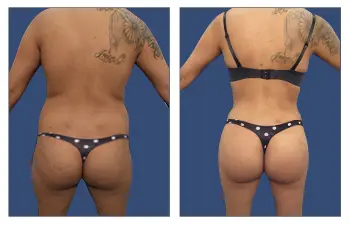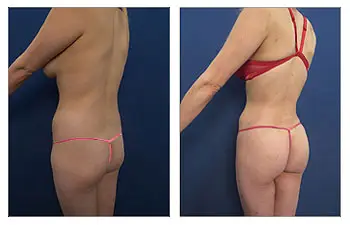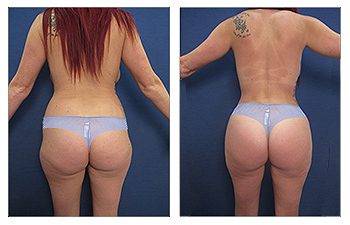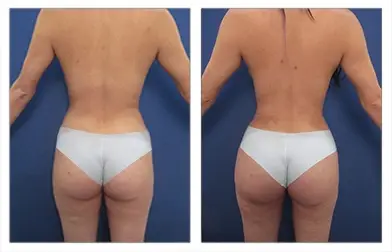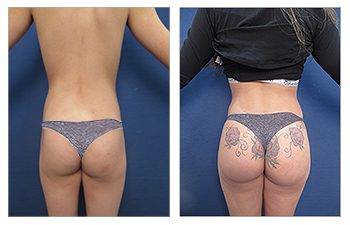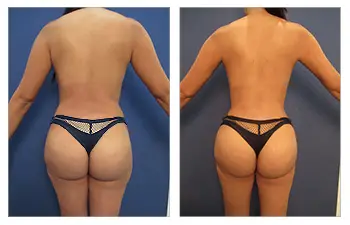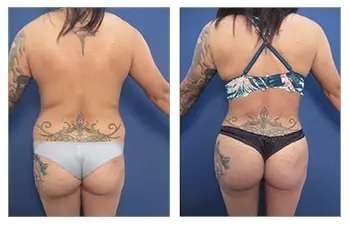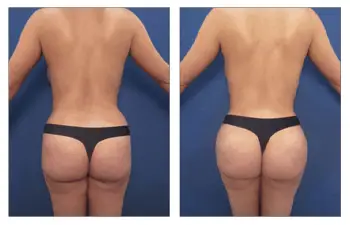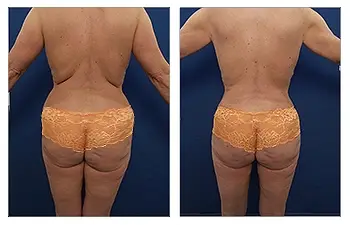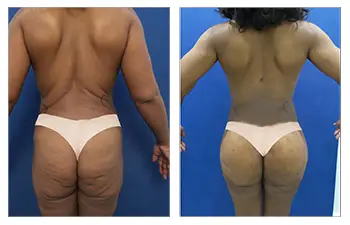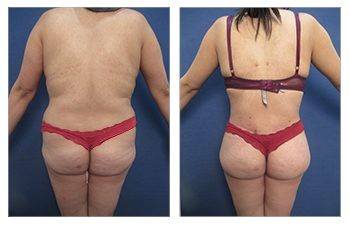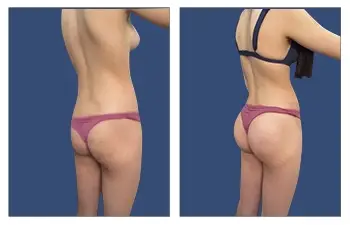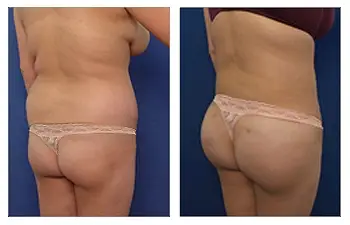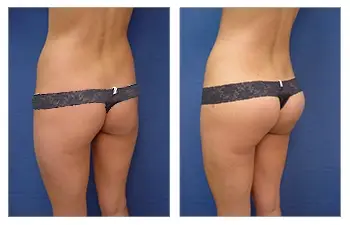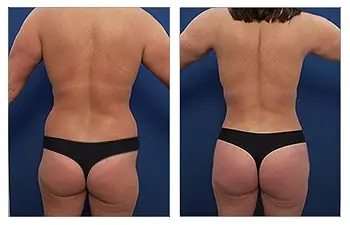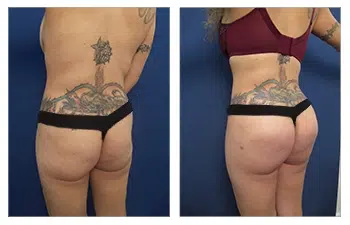What is a botched BBL?
A botched BBL refers to a Brazilian Butt Lift that has gone wrong or failed to meet the desired outcome. This popular cosmetic procedure aims to enhance the shape and size of the buttocks by injecting fat removed from other parts of the body. However, if performed improperly, a botched BBL can result in various complications and undesirable outcomes.
Complications that can arise from a botched BBL include infection, bleeding, asymmetry, and scarring. Infections can occur if proper hygiene is not maintained during the procedure, leading to inflammation and potential abscess formation. Excessive bleeding can result from damage to blood vessels during fat grafting, requiring surgical intervention to stop the bleeding.
Asymmetry is a common undesirable outcome in a botched BBL, where one buttock appears larger or misshapen compared to the other. This can be caused by uneven fat distribution or inadequate grafting techniques. Scarring may occur if incisions are made too large or not properly closed, leaving noticeable marks on the buttocks.
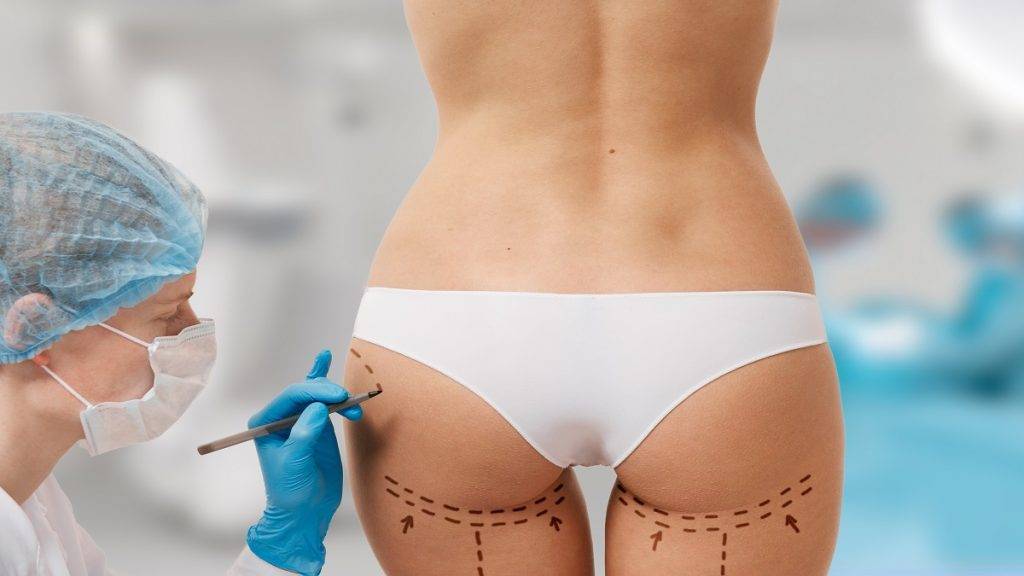
What are the most common Botched BBL Results
Botched Brazilian Butt Lift (BBL) results are unfortunately not uncommon, leaving many individuals dissatisfied or even facing severe health complications. The BBL procedure, popularized by its ability to enhance the shape of the buttocks, involves transferring fat from other areas of the body and injecting it into the buttocks to create a fuller and more rounded appearance. However, when the surgery is not performed correctly or by an inexperienced surgeon, a number of complications can arise. In this article, we will discuss the most common botched BBL results, shedding light on the potential risks and consequences individuals may face when seeking this cosmetic procedure.
Buttock Cheek Volume Small
Small buttock cheek volume refers to a lack of fullness or projection in the buttock area. This can affect the overall appearance and aesthetics of the buttocks, particularly in those individuals who desire a more prominent and rounded buttock shape.
When the buttock cheek volume is small, it can make the buttocks appear flat or square-shaped, which may not be in line with the desired aesthetic goals of an individual. This can affect their self-confidence and body image.
Clear communication with the surgeon is essential when discussing the desired size and shape of the buttocks. This allows for a better understanding of the individual’s expectations, and helps the surgeon develop a tailored surgical plan to achieve the desired results.
During the consultation process, patients should clearly express their desired size and shape of their buttocks, specifying their preference for buttock cheek volume. This will enable the surgeon to determine the most appropriate surgical technique to address the small buttock cheek volume and achieve the desired aesthetic outcome.
Buttock Cheek Volume Too Large
Large buttock cheek volume can occur due to a variety of factors, including weight gain, genetics, and excessive fat accumulation.
Weight gain is one common cause of large buttock cheek volume. When a person gains weight, their body stores excess fat in different areas, and the buttocks are one common location for fat deposition. This can result in an increase in the size of the buttock cheeks.
Genetics may also play a role in determining buttock cheek volume. Some individuals may have a genetic predisposition to store fat in the buttock area, leading to larger buttock cheeks. This can be seen in families where multiple members have similar body shapes and proportions.
Excessive fat accumulation in the buttock area can also contribute to large buttock cheek volume. Factors such as a sedentary lifestyle, poor dietary habits, and hormonal imbalances can lead to an accumulation of fat in the buttocks. This excess fat can cause the buttock cheeks to appear larger and have a higher volume.
Large buttock cheek volume can have several health implications. Firstly, it can cause discomfort, especially when sitting for prolonged periods. The excess weight in the buttocks can put pressure on the surrounding muscles and tissues, leading to pain and discomfort.
Limited mobility can also be a consequence of large buttock cheek volume. The added weight in the buttocks can make it more challenging to engage in physical activities and may restrict movement. This can impact overall physical fitness and limit the ability to perform daily tasks.
Moreover, individuals with large buttock cheek volume may experience self-image concerns. Society often places emphasis on a particular body shape, and having large buttock cheeks may not align with these beauty standards. This can lead to lower self-esteem, body image issues, and even mental health problems.
Buttock shape asymmetry
Buttock shape asymmetry refers to the condition in which a person’s buttocks exhibit noticeable differences in their shape, size, or overall appearance. This asymmetry can be caused by various factors including genetics, muscle imbalances, trauma, or previous surgeries.
The effects of buttock shape asymmetry can have both physical and psychological impacts on individuals. Physically, the asymmetry can cause uneven distribution of fat, resulting in a lopsided appearance or a lack of balance. This can lead to discomfort, self-consciousness, and difficulty finding clothing that fits properly. Psychologically, individuals may experience lowered self-esteem, body image issues, and a lack of confidence.
Addressing buttock shape asymmetry is crucial in achieving desired results in buttock augmentation procedures. Aesthetic procedures such as buttock augmentation aim to enhance the overall appearance and symmetry of the buttocks. If buttock shape asymmetry is not addressed prior to augmentation, it could result in further exaggeration of the existing asymmetry, leading to dissatisfaction and disappointment.
Common strategies or techniques used to correct buttock shape asymmetry include fat grafting, liposuction, and muscle reshaping. Fat grafting involves transferring fat from one area of the body to the buttocks to achieve a more symmetrical shape. Liposuction may be used to remove excess fat deposits in one buttock to match the other. Muscle reshaping techniques involve toning and strengthening the muscles surrounding the buttocks to improve symmetry.
Buttock shape deformity
Buttock shape deformities can occur following a Brazilian Butt Lift (BBL) surgery, leading to an unsatisfactory aesthetic outcome. Some common deformities include upper pole prominence resulting in a shelf deformity and a squared buttock appearance, as well as excessive prominence of the lower butt leading to a heart-shaped appearance.
Upper pole prominence refers to an excessive fullness in the upper portion of the buttocks, creating a shelf-like appearance. This can occur when too much fat is injected into the upper region, resulting in an unnatural contour. This deformity can give the buttocks an unbalanced and disproportional look, negatively impacting the overall aesthetic outcome.
On the other hand, excessive prominence of the lower butt can create a heart-shaped appearance. This occurs when an excessive amount of fat is injected into the lower portion of the buttocks, causing the lower region to appear disproportionately large compared to the upper region. This deformity can lead to an unbalanced and unnatural look.
Other common buttock shape deformities that may occur after BBL surgery include uneven contouring, asymmetry, and irregularities such as lumps or bulges. These deformities can further detract from the desired aesthetic outcome.
To address upper pole prominence and a shelf deformity, the excess fat in the upper portion can be suctioned out through liposuction or redistributed to other areas of the buttocks for a more balanced contour. Squared buttock appearance can be corrected by strategically adding fat to the lateral regions to create a rounder and more curved shape.
To correct an excessively prominent lower butt and heart-shaped appearance, fat can be removed through liposuction or redistributed to the upper portions for a more balanced and proportional contour. Careful fat grafting techniques can help achieve a more natural and aesthetically pleasing shape.
Overall, it is crucial for plastic surgeons to carefully assess and address these potential buttock shape deformities to optimize the outcome of BBL surgery. Attention to detail, precise fat grafting, and tailored contouring techniques are essential for achieving the desired aesthetic result.
Buttock cheek sagging
Buttock cheek sagging is a common issue that often leads to dissatisfaction with the shape and size of the buttocks. This condition occurs when the skin and muscles around the buttock area lose their firmness and elasticity, causing the cheeks to sag downwards.
There are several potential causes of buttock cheek sagging, including age, genetics, weight loss, and lack of exercise. As individuals age, the production of collagen and elastin, which are responsible for maintaining skin elasticity, decreases. This, in turn, leads to sagging of the buttock cheeks.
The impact of buttock cheek sagging on the overall appearance of the buttocks can be significant. It can make the buttocks look flatter and less defined, resulting in a lack of roundness and firmness. This can lead to a decrease in self-confidence and dissatisfaction with one’s body image.
Fortunately, there are various solutions and treatments available for addressing buttock cheek sagging. One common option is butt lift surgery, which involves removing excess skin and tightening the underlying muscles to lift and reshape the buttocks. Another non-surgical option is using dermal fillers or fat grafting to restore volume and plumpness to the buttock cheeks.
Exercise and targeted strength training can also help improve the appearance of buttock cheek sagging by toning the surrounding muscles and promoting skin elasticity. Additionally, certain skin tightening creams and treatments may provide temporary tightening effects.
Buttock Cheek Cellulite
Buttock cheek cellulite refers to the dimpled or lumpy appearance of the skin on the buttocks. It is a common condition that affects both men and women, but is more prevalent in women due to the differences in fat distribution and connective tissue structure.
The causes of buttock cheek cellulite can be attributed to various factors including hormonal changes, genetics, poor circulation, and an unhealthy lifestyle. Hormonal changes, such as fluctuations in estrogen levels, can weaken the connective tissue and contribute to the development of cellulite.
Genetics also play a role, as some individuals may have a predisposition to cellulite due to their genes. Poor circulation can lead to a buildup of toxins and fluid retention, which further exacerbate the appearance of cellulite. Additionally, an unhealthy lifestyle characterized by a sedentary routine, unhealthy diet, and smoking can contribute to the development of cellulite.
Symptoms of buttock cheek cellulite include the appearance of dimples, lumps, or an orange-peel texture on the skin. Cellulite is more noticeable when the skin is pinched or when pressure is applied to the affected area.
While complete eradication of cellulite may not be possible, there are several treatments available that can help reduce its appearance. These include massage therapy, topical treatments, laser therapy, and radiofrequency therapy. Massage therapy helps stimulate blood circulation and lymphatic drainage, while topical treatments containing caffeine or retinol can temporarily tighten the skin. Laser therapy and radiofrequency therapy aim to stimulate collagen production and increase skin elasticity.
Maintaining a healthy lifestyle is crucial in preventing the development of buttock cheek cellulite. Regular exercise, such as strength training and cardiovascular workouts, can help reduce excess fat and improve muscle tone. A balanced diet that is low in processed foods and rich in fruits, vegetables, lean proteins, and healthy fats can also support overall skin health. Additionally, avoiding smoking and maintaining a healthy weight can contribute to the prevention of cellulite.
How to Avoid Botched BBL?
Avoiding a botched Brazilian Butt Lift (BBL) is paramount for those seeking to enhance their buttocks’ shape and size. This cosmetic procedure has gained popularity over the years, but it is essential to prioritize safety and seek out qualified professionals to ensure the best possible outcome. By adhering to certain guidelines, patients can significantly reduce the risk of complications and achieve their desired results with confidence.
This article will discuss various measures individuals can take to avoid a botched BBL, covering aspects such as choosing a reputable surgeon, understanding the procedure, considering personal health factors, and following post-operative care instructions diligently. Taking the time to thoroughly prepare and educate oneself about the BBL process will ultimately contribute to a successful and satisfying outcome.
Use Experienced BBL surgeons
The importance of using experienced Brazilian Butt Lift (BBL) surgeons cannot be overstated. Their extensive experience allows them to tailor treatment plans to individual patients, achieving both natural and aesthetic results.
BBL surgery involves the transfer of fat from other areas of the body to the buttocks, creating a fuller and more rounded appearance. The process requires precision and artistic skill to ensure symmetrical results and a balanced overall physique. Experienced BBL surgeons have a deep understanding of the anatomy and proportions necessary to achieve natural-looking enhancements.
One of the key advantages of choosing an experienced BBL surgeon is their ability to customize treatment plans to suit each patient’s unique needs and desires. They consider factors such as the patient’s body shape, desired outcome, and available fat sources for grafting. By taking into account these individual aspects, experienced surgeons can create a personalized approach that maximizes the chances of achieving the desired results.
When selecting a skilled BBL surgeon, several factors should be considered. Firstly, the number of completed BBL procedures performed by the surgeon can indicate their level of experience and expertise in this specific area. Additionally, before-and-after photos can provide visual evidence of a surgeon’s ability to deliver natural and aesthetic results. By thoroughly reviewing these photos, patients can gain an understanding of the surgeon’s artistic vision and determine whether it aligns with their own goals.
Use Closed Loop Cannister
A Closed Loop Cannister is a revolutionary innovation that aims to address the issue of waste and environmental impact in our society. Its functionality lies in its ability to collect and reuse materials, thereby creating a closed loop process. By utilizing this process, we can significantly reduce waste and minimize our environmental footprint.
The concept of a Closed Loop Cannister is simple yet powerful. Instead of discarding materials after use, they are collected and returned to the cannister. These materials are then transformed into new products, completing the loop. This closed loop process ensures that valuable resources are not wasted and can be reused to create new items.
The benefits of using a Closed Loop Cannister are manifold. Firstly, it greatly reduces the amount of waste generated. Instead of filling up landfills with items that could still be useful, they are given a second life. By reducing waste, we also minimize the pollution and energy consumption associated with the production and disposal of materials.
Furthermore, using a Closed Loop Cannister has a positive environmental impact. It reduces the need for raw materials extraction, which often leads to deforestation and habitat destruction. It also decreases greenhouse gas emissions associated with the manufacturing process.
Use Brazilian Butt Lift Assessment Tool
The Brazilian Butt Lift Assessment Tool is a comprehensive tool designed to evaluate the suitability of patients for the popular cosmetic procedure known as the Brazilian Butt Lift. This tool serves as a crucial step in determining the appropriateness of the procedure for individual patients and ensuring their safety and overall satisfaction.
The assessment tool takes into account various factors and criteria to determine the suitability of the patient. One of the most important aspects considered is the patient’s health conditions. Since the Brazilian Butt Lift is a surgical procedure, it is crucial to assess the patient’s overall health to minimize potential risks and complications. The tool evaluates any existing medical conditions or concerns that may contraindicate the procedure.
Body weight is another significant factor considered by the Brazilian Butt Lift Assessment Tool. The tool assesses whether the patient’s body weight is within a healthy range for the procedure. This is important as patients with extremely low or high body weight may be more susceptible to complications during and after the surgery.
Moreover, the assessment tool also takes into account the patient’s expectations and goals. It evaluates whether the patient’s desired outcome aligns with what the Brazilian Butt Lift can realistically achieve. Managing expectations is essential to ensure patients are satisfied with the results and have a realistic understanding of the procedure.
Use BBL Calculator
The use of a BBL calculator can greatly assist in determining the cost of a Brazilian Butt Lift (BBL) revision procedure. This calculator is specifically designed to estimate the expenses associated with the surgery by taking into consideration various factors.
The significance of the BBL calculator lies in its ability to generate an estimated cost based on an individual’s unique surgical needs. Factors such as the surgeon’s fees, facility costs, anesthesia, post-operative care, and any additional procedures required are all taken into account. By inputting specific details about the patient’s desired outcomes and desired revision procedures, the calculator can provide an accurate cost estimate.
This tool is highly valuable because it allows prospective patients to plan and budget accordingly for their BBL revision surgery. It eliminates the guesswork and provides a realistic idea of the financial investment required for the procedure.
Use VASER Liposuction
VASER Liposuction is a revolutionary procedure for body contouring that offers several benefits over traditional liposuction techniques. This minimally invasive procedure utilizes ultrasound technology to target and break down fat cells, resulting in smoother and more precise results.
The procedure begins with the administration of tumescent anesthesia, which means injecting a dilute local anesthetic solution to numb the targeted area. Then, a small probe emitting high-frequency sound waves is inserted into the fatty tissue. These sound waves selectively disrupt and break down the fat cells, while preserving other important tissues such as nerves, blood vessels, and collagen fibers.
One of the major benefits of VASER Liposuction is that it offers a more precise and controlled fat removal process, leading to smoother and more natural-looking results. Additionally, the ultrasound energy utilized in VASER Liposuction stimulates the production of collagen, which helps to tighten the skin and improve overall skin quality.
VASER Liposuction is a versatile technique that can be used to target and contour a range of areas on the body. Common treatment areas include the abdomen, thighs, arms, back, and neck. This makes it an ideal solution for both men and women looking to sculpt and define their bodies.
Overall, VASER Liposuction is a safe and effective procedure that utilizes ultrasound technology to target and break down fat cells, resulting in smoother and more precise body contouring results. It offers several benefits over traditional liposuction techniques and can be used to treat various areas of the body for optimal results.
Conclusion: Botched BBL
In summary, it is crucial to choose a skilled surgeon with advanced techniques and experience when considering a Brazilian Butt Lift (BBL) procedure. The botched cases discussed highlight the potential risks and complications that can arise when the procedure is not performed by a qualified professional.
One of the key factors to ensure a successful BBL is the use of advanced techniques by a skilled surgeon. These techniques not only improve the safety of the procedure but also enhance the overall results. It is essential to look for a surgeon who constantly updates their knowledge and skills to keep up with the latest advancements in the field.
Additionally, the Buttock Assessment Tool should be utilized during the BBL procedure. This tool helps the surgeon determine the ideal shape, size, and projection of the buttocks based on the patient’s individual body proportions. By considering the patient’s unique anatomy, the surgeon can create a more natural and balanced outcome. This tool further emphasizes the need for a surgeon who is knowledgeable and experienced in performing BBLs.
Lastly, a surgeon with an aesthetic artistic eye is crucial in achieving a successful BBL. The ability to envision and create the desired aesthetic outcome requires a blend of technical skill and artistic sense. A skilled surgeon will have an eye for balance, proportion, and symmetry, ensuring that the final result is not only aesthetically pleasing but also harmonious with the patient’s overall appearance.

